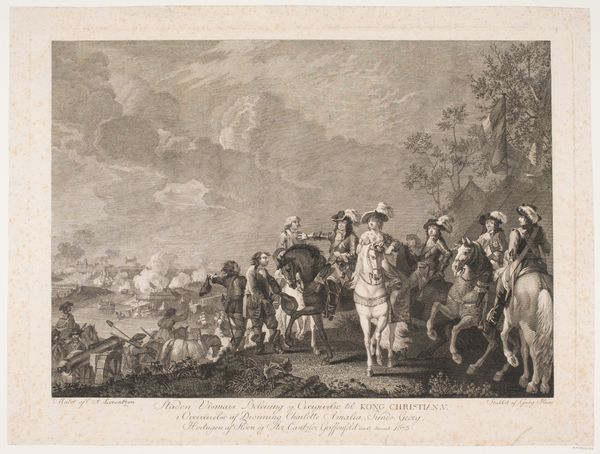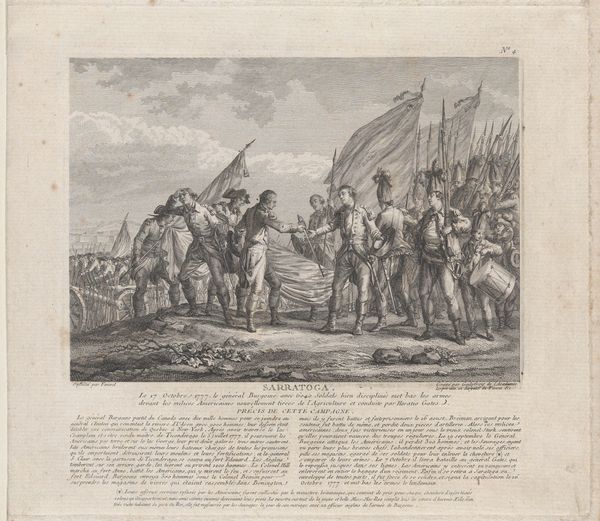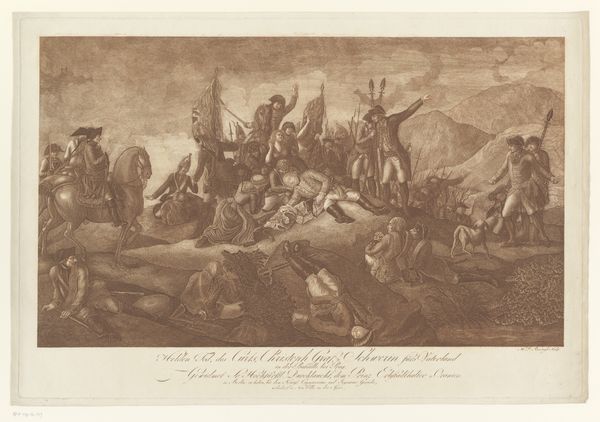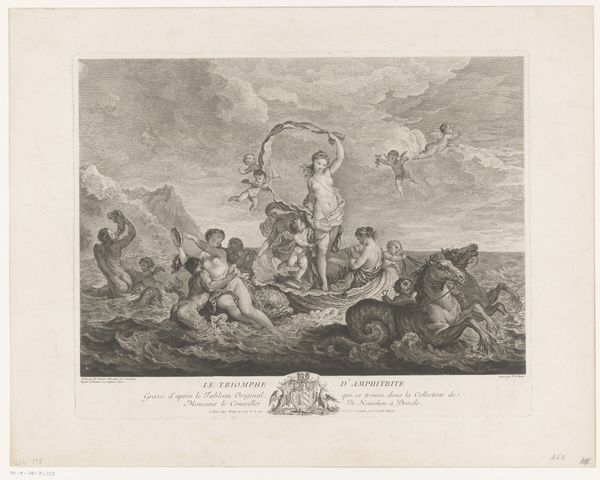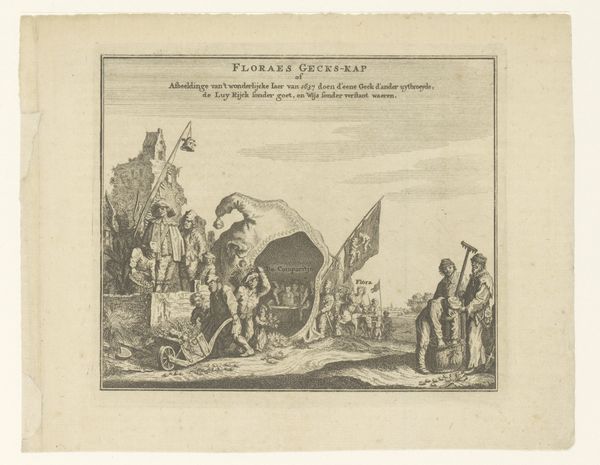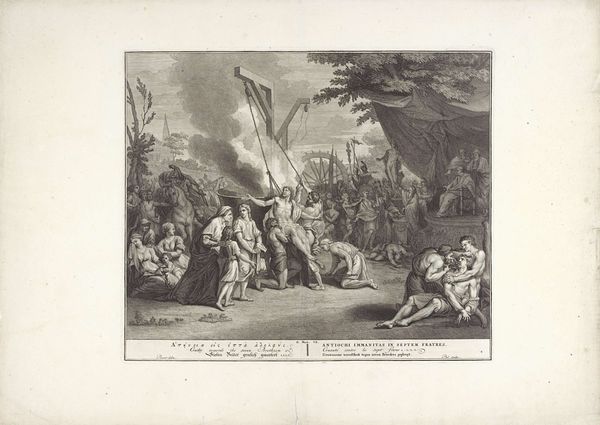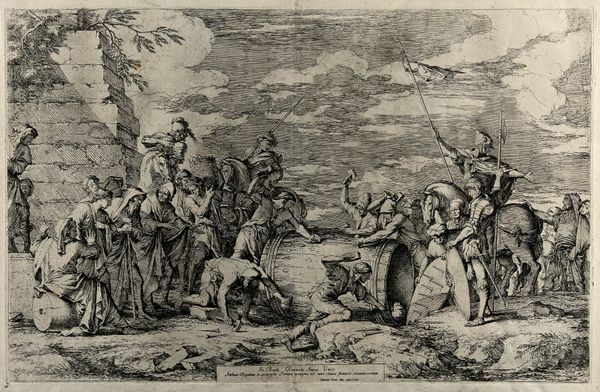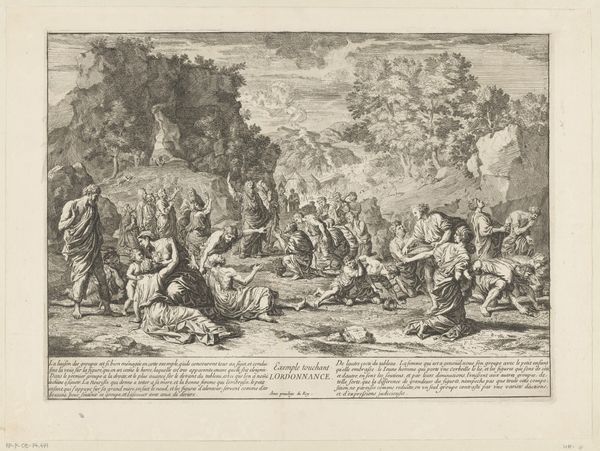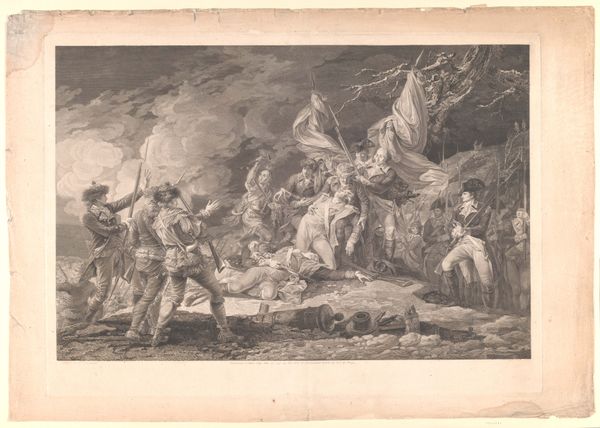
The Death of General Wolfe (September 13, 1759) 1776 - 1790
0:00
0:00
drawing, print, engraving
#
drawing
# print
#
landscape
#
figuration
#
history-painting
#
academic-art
#
engraving
Dimensions: plate: 6 7/8 x 8 3/4 in. (17.5 x 22.2 cm) sheet: 10 1/16 x 12 5/8 in. (25.5 x 32 cm)
Copyright: Public Domain
Editor: This engraving, titled "The Death of General Wolfe," was created sometime between 1776 and 1790 by P. Somebody, based on a painting by B. West. The composition strikes me as both grand and staged. How do you interpret the print's significance? Curator: I see a calculated effort to shape public memory. Look at the materials: an engraving, a reproducible medium designed for wide distribution. This speaks volumes. This wasn't just about commemorating a death; it was about constructing a specific narrative about British heroism for mass consumption. Editor: So the act of creating prints, instead of an original oil painting, served to amplify the intended meaning. But, beyond the method, what of the components themselves? Curator: Observe the precise lines, the almost theatrical arrangement of figures. This wasn't about raw, immediate emotion. The meticulousness of the engraving process served to create an idealized vision of British sacrifice for an intended audience that was in pursuit of a collective patriotic identity and morale building following war and loss. Think about who owned this print, where it might have been displayed. What does its existence tell us about 18th century society and its value of print media at large? Editor: It's fascinating to consider how the very means of production impacted its message and broadened the consumption and reach. How much of it relates to national identity building then? Curator: Indeed. The engraving transcends individual expression, operating as a deliberate instrument of cultural production that both memorializes the battle and serves political purposes to those buying the printed media for social signalling or allegiance to statehood, which is a value added to those specific objects that one cannot find in contemporary digital spaces, such as NFTs or meme content. Editor: I'm walking away with a totally different perspective on this seemingly straightforward history print, thank you for bringing in materiality of production! Curator: You're welcome! Examining an artwork's production method offers a whole new depth to any object or image in visual study, which is the key.
Comments
No comments
Be the first to comment and join the conversation on the ultimate creative platform.
